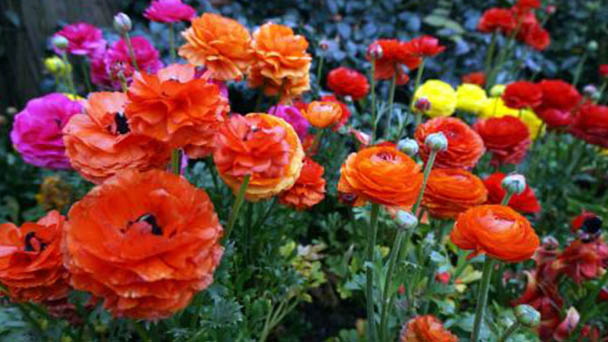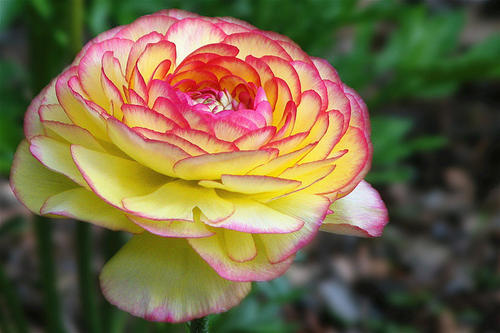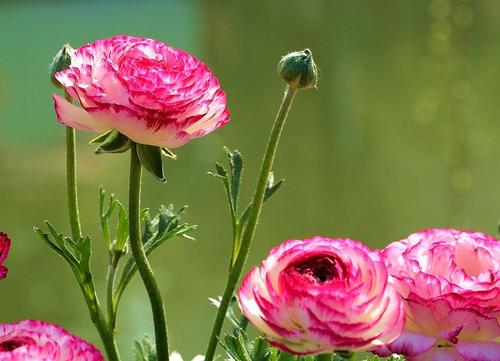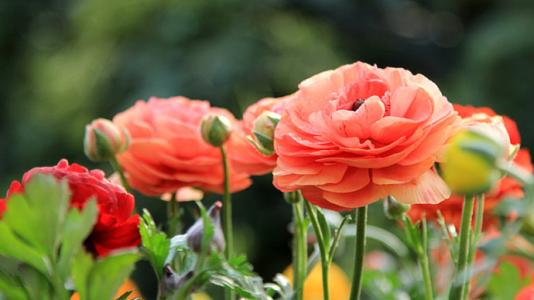How to Grow and Care for Persian Buttercup
Written by Maggie
Nov 03 2021

In the growing process of Persian Buttercup, peat, perlite, garden soil and fermented cake fertilizer were used as culture soil in the Persian Buttercup. During the growth period, compound fertilizer was applied once a month, and potash fertilizer was applied 1 to 2 times after pharming. During maintenance, the matrix was always kept moist and free of water, and disease prevention was required. Next, we'll talk about details of how to grow and care for Persian Buttercup.

How to grow Persian Buttercup
1. Soil requirements
Persian Buttercup was suitable for growth in fertile, loose, and permeable sandy soils. In the formulations of cultured soils, 3 portions of peat, 1 portion of perlite, 5 portions of garden soil, and 1 portion of dried pancake fertilizer were used. In the basins, the soil was thoroughly sterilized to allow proper root growth.
2. Fertilize regularly
Engraftment of rotten cake fertilizer can be added in the soil or animal dung as basal, grow new leaves start fertilizer after 1 ~ 2 times, thin alternating urea or liquid compound fertilizer fertilization are available, and the growth season when applying compound fertilizer, once a month to spend again after 1 ~ 2 times is given priority to with potash fertilizer effects, to promote flower bud germination.
3. Water requirement
Water environment is key to growing and caring for Persian buttercup. In the Persian Buttercup, the lyrics favor wet growing conditions but are not resistant to floodwaters. So keep the soil moist and free of water when you water it. Do not make the soil too dry during growth, or the leaves and branches will not grow well. The amount of watering can be gradually controlled after entering the cool autumn.
4. Light and temperature treatment
When growing Persian Buttercup, the growth conditions were typically cool and light resistant. In addition to sufficient sunshine in autumn and winter, proper shading was used in spring and summer when there was strong light. The optimal growth temperature was between 15℃ and 28℃ in spring and summer, and germination temperature was around 15℃ in the persian buttercup to facilitate seed survival.

How to care for Persian Buttercup
When growing Persian Buttercup, where the leaves are tender and prone to white silkworm disease during growth, there are pale brown blotches in the stem and then a rapeseed sclera, so there is frequent ventilation in the growing passages, using thin wellingamycin injection as a buffer.
When growing Persian Buttercup, the majority of roots are longer and less resistant to transplanting. Before sowing, apply some ripe bean cakes as base fertilizer and plant the seeds directly in the pot.
When growing Persian Buttercup, the roots are thick and dry. In rainy seasons, there is black rot around the neck of the stick, thus requiring timely drainage in open field cultivation in summer. Water the plants properly.
In the growth peak season and before flowering, watering should not be too much, every month to apply a thin and ripe cake fertilizer water, so that the plant growth is good.
During the growth period whitefly harms more, we should pay attention to prevention.
After the peel turns yellow, the seeds should be harvested in the early morning, otherwise the seeds will be easily scattered. When drying the capsule, pay attention to cover the container with glass, because after drying, the bursting of the peel is very violent, the seeds will be ejected out of the container, which is not conducive to seed harvesting.

Read Next:
Persian Buttercup (Ranunculus Flower) Grow & Care Guide
Latest Updated
- Benefits of Bugleweed - 7 Science-backed Health Benefits
- Bugleweed Dangers & Side Effects - Is It Poisonous?
- How to Plant Evergreen Trees - What You Should Know
- When to Plant Evergreens - Grow Guide for Evergreen Trees
- 12 Wonderful Evergreen Shrubs for Your Garden
- 12 Popular Evergreen Plants with Pictures for Beginners
- When And How To Prune A Lilac Bush Like a Pro
- How to Grow & Care for Lilac Vine (Hardenbergia Violacea)
- Japanese Lilac Tree (Syringa Reticulata) Care & Propagation Guide
- Shumard Oak Pros and Cons - What to Know
Popular Articles
- Winter maintenance of Antirrhinum Majus
- How to Grow Terminalia Mantaly Tree
- How to Grow and Care for Crossostephium Chinense
- How to grow Antirrhinum Majus in spring
- Peristeria Elata (Dove Orchid) Profile: Info & Care Guide
- Underwatered Snake Plant (Sansevieria Trifasciata) - Signs And How To Fix
- How to Care for Brazilian Jasmine Plant (Mandevilla Sanderi)
- How to Grow & Care for Graptopetalum Purple Delight in Summer
- Rosa Chinensis (China Rose): Plant Growing & Care Tips
- How to Care for Baby Sun Rose (Aptenia Cordifolia)